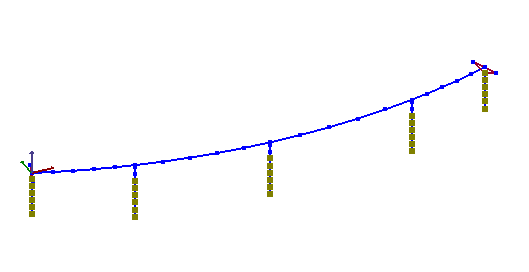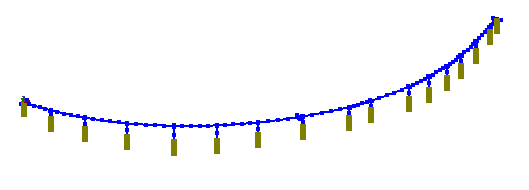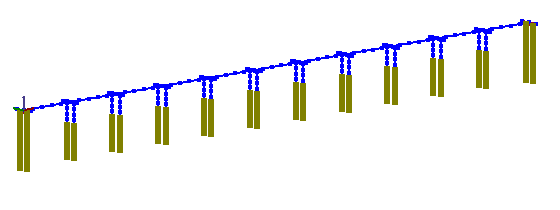
|
MSBridge*
*Elgamal, A., Lu, J., Almutairi, A., and Mackie, K (2017). MSBridge: OpenSees Pushover and Earthquake Analysis of Multi-span Bridges - User Manual, Beta 1.0.
 |
 |
 |
 |
Download and Install
-
Tcl 8.5 (64-bit) (Needed to run OpenSees analysis in MSBridge)
MSBridge Installation File (ver. 1.0, updated 3/24/2022)
MSBridge User Manual
Acknowledgment
Development of MSBridge was funded primarily by California Department of Transportation (CALTRANS). Additional funding was provided by the Pacific Earthquake Engineering Research Center (PEER), a multi-institutional research and education center with headquarters at the University of California, Berkeley.
Developed by PEER, OpenSees (http://opensees.berkeley.edu) is employed to conduct the MSBridge Finite element computations. OpenSees is a software framework for developing applications to simulate the performance of structural and geotechnical systems subjected to earthquake loading.
Disclaimer
Copyright (C) The Regents of the University of California. All Rights Reserved.
This software is permitted to be used, without fee and without a written license agreement: (a) by educational, research, and non-profit entities for noncommercial purposes only; and (b) by other entities for internal purposes only. Permission to incorporate this software into commercial products may be obtained by contacting the University of California.
This software program and documentation are copyrighted by The Regents of the University of California. The software program and documentation are supplied "as is".
California Department of Transportation (CALTRANS), the University of California, The Pacific Earthquake Engineering Research Center (PEER), funding and sponsoring agencies, and any organizations and individuals who contributed to the development of the software and documentation are not responsible for any inaccuracy or incompleteness of the software, data, results, and documentation. The user of the software assumes the entire responsibility of using it.
In no event shall CALTRANS, the University of California, PEER and developers of the software, be liable to any party for direct, indirect, special, incidental, or consequential damages, including lost profits, arising out of the use of the software and its documentation, even if CALTRANS, the University of California, PEER and developers of the software have been advised of the possibility of such damage.
CALTRANS, the University of California, PEER, and developers of the software, specifically disclaim any warranties, including, but not limited to, the implied warranties of merchantability and fitness for a particular purpose. CALTRANS, the University of California, PEER and developers of the software, have no obligations to provide maintenance, support, updates, enhancements, or modifications.